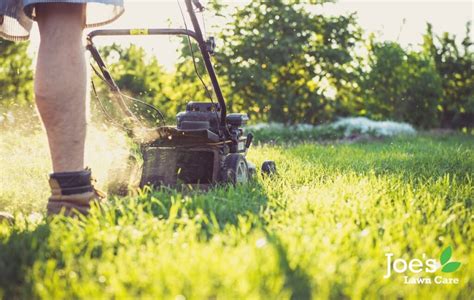Mowing Wet Grass: Get it Over With Quickly – But Should You?
Mowing wet grass is a tempting shortcut, especially when you're pressed for time. But is it really the best idea? The quick answer is: generally, no. While you can mow wet grass, doing so often leads to more problems than it solves. This article will explore the downsides of mowing wet grass, offer tips for when you absolutely must mow it while damp, and provide alternatives to save your lawn and your mower.
Why You Shouldn't Mow Wet Grass
The primary reason to avoid mowing wet grass is the damage it can inflict on your lawn and your equipment. Let's break it down:
Clumping and Clogging: Wet grass blades tend to clump together, clogging your mower's blades and chute. This leads to inefficient cutting, uneven lawn appearance, and potentially damaging your mower's engine. You'll likely find yourself constantly stopping to clear the blockage, turning a quick job into a frustrating ordeal.
Scalping: The weight of the wet grass makes it more difficult for the mower blades to cut cleanly. This can lead to scalping – cutting the grass too short, damaging the crown of the plant and potentially hindering its growth. A scalped lawn is more vulnerable to disease and weeds.
Disease and Fungus: Wet grass provides an ideal breeding ground for fungal diseases. Mowing wet grass can spread these diseases across your lawn, leading to brown patches and overall unhealthy growth. The damp conditions, coupled with the damaged grass blades from inefficient cutting, increase susceptibility to infection.
Mower Damage: As mentioned above, clogging and clumping can strain your mower's engine and blades. This can shorten its lifespan and lead to costly repairs down the line. The added stress on the engine can also impact fuel efficiency.
When You Must Mow Wet Grass: Tips for Minimizing Damage
Sometimes, unforeseen circumstances force your hand. If you absolutely must mow wet grass, follow these tips to mitigate the damage:
Sharpen Your Blades: Sharp blades cut cleaner, reducing the likelihood of clumping and scalping. Dull blades will tear the grass, creating more of a mess and increasing the risk of disease.
Raise the Cutting Height: Setting your mower to a higher cutting height will reduce the stress on the blades and minimize scalping. It's better to have slightly longer grass than to risk damaging the lawn.
Take it Slow: Mowing slowly allows the mower to process the grass more effectively. This reduces clogging and provides a cleaner cut.
Multiple Passes: Consider making multiple passes over the same area if necessary. This can help prevent clogging and ensure an even cut, especially on thicker patches of wet grass.
Clean Your Mower Thoroughly Afterwards: Remove all grass clippings from the mower deck, blades, and chute to prevent rust and ensure its longevity.
Alternatives to Mowing Wet Grass
The best solution is often to simply wait for the grass to dry. Here are some alternatives:
Wait for Dry Conditions: This is always the best option. Even a slight delay can make a significant difference in mowing efficiency and lawn health.
Reschedule Your Mowing: Plan your mowing schedule to avoid days with high humidity or rain.
Invest in a Mulching Mower: Mulching mowers chop grass clippings into small pieces and return them to the lawn as fertilizer. While not ideal for wet grass, the smaller clippings are less prone to clogging than traditional mowers.
In conclusion, while mowing wet grass might seem like a quick fix, the potential damage to your lawn and equipment often outweighs the time saved. Waiting for dry conditions is always the best approach, but if you must mow wet grass, follow the tips provided to minimize the negative consequences. Remember, a healthy lawn requires careful consideration, and choosing the right conditions for mowing is a vital part of lawn care.

